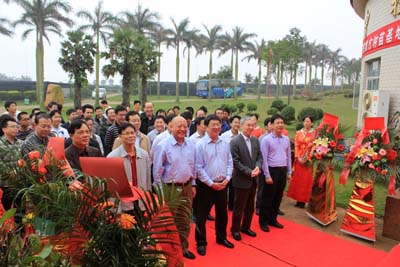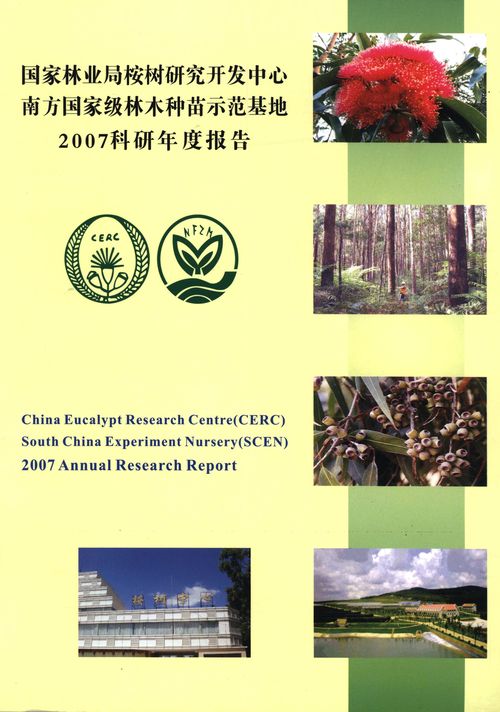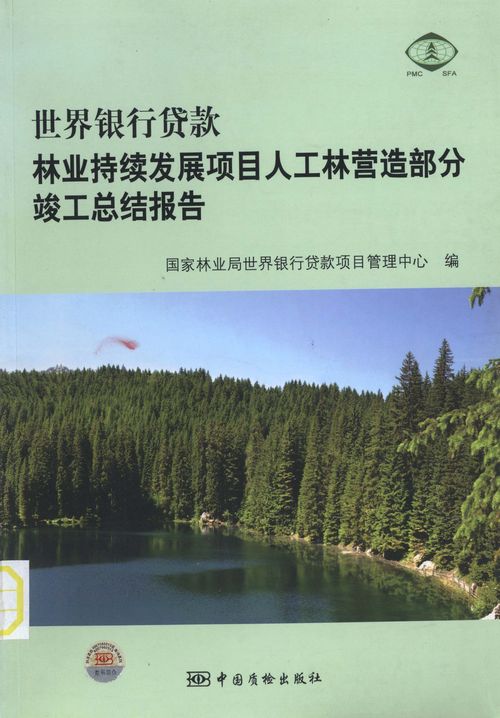
桉树人工林生长模型研究进展
编号
lyqk003912


中文标题
桉树人工林生长模型研究进展


作者单位
华南农业大学生命科学学院,广州 510642;华南农业大学生命科学学院,广州 510642;华南农业大学生命科学学院,广州 510642;中国科学院华南植物园,广州 510650


期刊名称
世界林业研究


年份
2012


卷号
25


期号
4


栏目编号
1


栏目名称
专题论述


中文摘要
桉树人工林生长模型包括传统统计模型和现代动态模型。传统统计模型方法包括单因素回归模型、多元回归模型、灰色系统模型、单一分布拟合法、多模型优选法、逐步回归法及其他改进方法。这些统计模型虽然简单、拟合精度高,但只是静态的经验或半经验模型,并未阐明机理,普适性很差,对于动态反馈也无能为力。现代动态模型主要包括3-PG过程模型、人工神经网络模型和系统动力学模型。与传统统计模型相比,动态模型相对较复杂、精度较低,但能够满足多因素交互、非线性预测、动态模拟、多目标决策的研究要求。文中分析了桉树人工林生长模型的特点、各研究方法的比较及系统动力学在林业中的应用,认为系统动力学模型更适合涉及多因素反馈的桉树人工林生长模型的研究。


基金项目
国家自然科学基金项目(31070483)


英文标题
A Review of Eucalyptus Plantation Growth Model


作者英文名
Chen Feipeng,Xu Wenqiang,Yang Xue and Lu Hongfang


单位英文名
College of Life Sciences,South China Agricultural University,Guangzhou 510642,China;College of Life Sciences,South China Agricultural University,Guangzhou 510642,China;College of Life Sciences,South China Agricultural University,Guangzhou 510642,China;South China Botanical Garden,Chinese Academy of Sciences,Guangzhou 510650,China


英文摘要
Eucalyptus plantation growth models could be classified into traditional statistical models and modern dynamic models. Traditional statistical models include univariate regression analysis, multiple regression analysis, gray system model, single distribution fitting, multi-model optimization, stepwise regression and other refined methods. Though the traditional statistical models are simple and accurate in fitting, they are only empirical or semi-empirical models, which cannot present the mechanisms and the dynamic feedbacks, and consequently cannot be applied widely. Modern dynamic models include 3-PG process model, artificial neural network model and system dynamic model. Modern dynamic models are complex but low in accuracy, while they can meet the requirements in the studies of multi-factor interaction, nonlinear prediction, dynamic simulation, and multi-objective decision. It was recommended that the system dynamic model be more suitable to apply in the study of Eucalyptus plantation growth models.


英文关键词
Eucalyptus;plantation;growth model


起始页码
34


截止页码
38


投稿时间
2012/2/11


分类号
S758.52


参考文献
[1] 郭恩莹.桉树人工林林分生长模型研究.福州:福建农林大学, 2009.
[2] 黄宝灵,吕成群,蒙钰钗,等.尾叶桉人工林种群密度的研究[J].应用生态学报, 2000,11(1):31-33.
[3] 陆玉云,宋永全.滇南地区尾巨桉生长量预测[J].林业调查规划, 2010,35(1):18-22.
[4] 余雪标,徐大平,龙腾,等.连栽桉树人工林生长特性和树冠结构特征[J].林业科学, 2000,36(1):137-142.
[5] 胥辉,文仕军.干热河谷赤桉生物量模型的研究[J].西南林学院学报, 2000,20(4):191-195.
[6] 胥辉,马焕成,王学力,等.赤桉叶面积动态模型的研究[J].云南林业科技, 2000(1):19-22.
[7] 黄宝强,谢茂华,黄健翔,等.桉树人工林生长预测模型的研究[J].林业实用技术, 2004(1):6-7.
[8] Mabvurira D, Maltamo M, Kangas A. Predicting and calibrating diameter distributions of Eucalyptus grandis (Hill) Maiden plantations in Zimbabwe[J]. New Forests, 2002,23(3):207-223.
[9] 周元满,谢正生,刘素青,等. Logistic模型在桉树生长过程估计中的应用[J].南京林业大学学报:自然科学版, 2004,28(6):107-110.
[10] 周元满,谢正生,刘新田. Richards函数在桉树无性系林分生长预测上的应用研究[J].西南农业大学学报:自然科学版, 2005,27(2):240-243.
[11] 薛鹏.雷州林业局6年生尾叶桉人工林生长量及生物量研究[J].桉树科技, 2009,26(1):18-21.
[12] 黄从德,胡庭兴,赖家明.四川巨桉短周期工业原料人工林直径分布规律及其收获模型的研究[J].四川林业科技, 2003,24(3):25-30.
[13] 陈永富.短周期桉树人工林直径分布模型研究[J].林业科学研究, 2008,21(增1):50-54.
[14] 胡喜生,周新年,兰樟仁,等.人工林桉树胸径分布模型的研究[J].福建林学院学报, 2008,28(4):314-318.
[15] Diao J, Lei X, Hong L, et al. Single leaf area estimation models based on leaf weight of Eucalyptus in southern China[J]. Journal of Forestry Research, 2010,21(1):73.
[16] 曾慎松.巨尾桉人工林地径与胸径、树高相关模型的研究[J].福建林业科技, 2007,34(1):40-42.
[17] 蔡会德,许仕道,曾俊国.组合模型在林木生长规律研究中的应用[J].林业调查规划, 2002(4):18-20.
[18] 岑巨延,黄永,曾伟生.广西速丰桉树人工林二元胸高形数模型研究[J].中南林业调查规划, 2008,27(1):6-10.
[19] 岑巨延.广西桉树人工林二元立木材积动态模型研究[J].华南农业大学学报, 2007,28(1):91-95.
[20] 岑巨延,李巧玉,曾伟生, 等.广西速丰桉人工林相对树高曲线模型研究[J].中南林业科技大学学报, 2007,27(4):23-27.
[21] 韦启忠,岑巨延,刘频.广西速丰桉林分二元材积生长率表研制[J].中南林业调查规划, 2008,27(2):5-8.
[22] 龙滕周.基于理论生长方程的尾巨桉人工林栽培密度效应评价.北京:中国林业科学研究院, 2008.
[23] 向仰州,徐大平,杨曾奖,等.海南桉树人工林直径分布模型[J].林业资源管理, 2011(3):69-71.
[24] 徐德应.林分和林木生长预测模型[J].世界林业研究, 1988,1(3):42-49.
[25] Miehle P,Battaglia M,Sands P J,et al.A comparison of four process-based models and a statistical regression model to predict growth of Eucalyptus globulus plantations[J].Ecological Modelling,2009,220(5):734-746.
[26] Landsberg J J,Waring R H.A generalised model of forest productivity using simplified concepts of radiation-use efficiency, carbon balance and partitioning[J].Forest Ecology and Management,1997,95(3):209-228.
[27] Battaglia M,Sands P J.Process-based forest productivity models and their application in forest management[J]. Forest Ecology and Management,1998,102(1):13-32.
[28] Dye P J. Modelling growth and water use in four Pinus patula stands with the 3-PG model[J]. Southern Forests:a Journal of Forest Science, 2001,191(1):53-64.
[29] Landsberg J J,Johnsen K H,Albaugh T J,et al.Applying 3-PG, a simple process-based model designed to produce practical results, to data from loblolly pine experiments[J].Forest Science,2001,47(1):43-51.
[30] Rodríguez-Suárez J,Soto B,Iglesias M,et al.Application of the 3PG forest growth model to a Eucalyptus globulus plantation in Northwest Spain[J].European Journal of Forest Research,2010,129(4):573-583.
[31] 花利忠,徐大平,江希钿,等.桉树人工林3-PG模型[J].福建林学院学报, 2004,24(2):140-143.
[32] 花利忠,江希钿,贺秀斌. 3-PG模型在华南尾叶桉人工林的应用研究[J].北京林业大学学报,2007,29(2):100-104.
[33] Morris J D,Baker T.Using a process-based forest model to estimate the potential productivity of Eucalyptus plantations in southern China[M]// Wei R,Xu D.Eucalyptus plantations: research, management and development. Singapore, World Scientific, 2003:325-337.
[34] Morris J D.Predicting the environmental interactions of Eucalyptus plantations using a process-based forest model//Turnbull J W (ed).Eucalyptus in Asia: proceedings of an international conference Held in Zhanjiang, Guangdong, People's Republic of China, 7-11 April 2003. Canberra,ACIAR,2003:185-192.
[35] Battaglia M,Sands P,White D,et al.CABALA: a linked carbon, water and nitrogen model of forest growth for silvicultural decision support[J]. Forest Ecology and Management,2004,193(1/2):251-282.
[36] Aber J D,Federer C A.A generalized, lumped-parameter model of photosynthesis, evapotranspiration and net primary production in temperate and boreal forest ecosystems[J].Oecologia,1992,92(4):463-474.
[37] Aber J D,Reich P B,Goulden M L.Extrapolating leaf CO2 exchange to the canopy: a generalized model of forest photosynthesis compared with measurements by eddy correlation[J].Oecologia,1996,106(2):257-265.
[38] Li C,Frolking S,Frolking T A.A model of nitrous oxide evolution from soil driven by rainfall events: 1. model structure and sensitivity[J]. Journal of Geophysical Research,1992,97(D9):9759-9776.
[39] Li C,Aber J,Stange F,et al.A process-oriented model of N2O and NO emissions from forest soils:1. model development[J].Journal of Geophysical Research,2000,105(D4):4369-4384.
[40] 刘金福,洪伟.闽南山地巨尾桉生长的土壤主导因子调控模型研究[J].土壤学报,2001,38(4):514-521.
[41] 邓成,吕勇,雷渊才,等.林木生长和收获模型研究进展与发展趋势[J].林业调查规划,2010,35(1):7-12.
[42] 李先争,徐国祯.系统动力学方法在林业生产结构研究中的应用[J].林业资源管理,1986(6):59-63.
[43] 包焕升.战略与策略决策的实验室:系统动力学介绍[J].科学学与科学技术管理,1987(1):10-11.
[44] 成洪山,王艳,李韶山,等.系统动力学软件STELLA在生态学中的应用[J].华南师范大学学报:自然科学版,2007(3):126-131.
[45] 王婷,吴元宁,张大伟,等.常用生态模拟软件探讨[J].农业网络信息,2005(11):98-101,104.
[46] 李宏,唐守正.系统动力学在林业中的运用[J].西南林学院学报,2000,20(3):174-179.
[47] 赵道胜,李全基,张经林.图强林业局火烧后森林资源动态分析[J].林业经济,1989(4):44-49.
[48] 戴小龙,唐守正.大青山实验局森林资源的动态分析及其SD模型[J].林业科学,1991,27(3):210-218.
[49] 王辰,惠淑荣,刘强.系统动力学方法在林分断面积生长模型中的应用[J].沈阳农业大学学报,2007,38(4):544-547.


PDF全文
浏览全文


-
相关记录
更多
- 海南土沉香人工林经营现状及对策探讨 2023
- 桉树人工林间作农作物对土壤物理性状的影响 2022
- 利川市4种典型人工林的植物多样性分析 2022
- 桉树油桐尺蛾发生与环境因子的关系 2022
- 世界林业视角下古代中国的“大造林”——评《杉木与帝国:早期近代中国的森林革命》 2022
- 菌—植体系强化重金属污染土壤植物修复研究进展——以桉树为例 2023
 打印
打印







